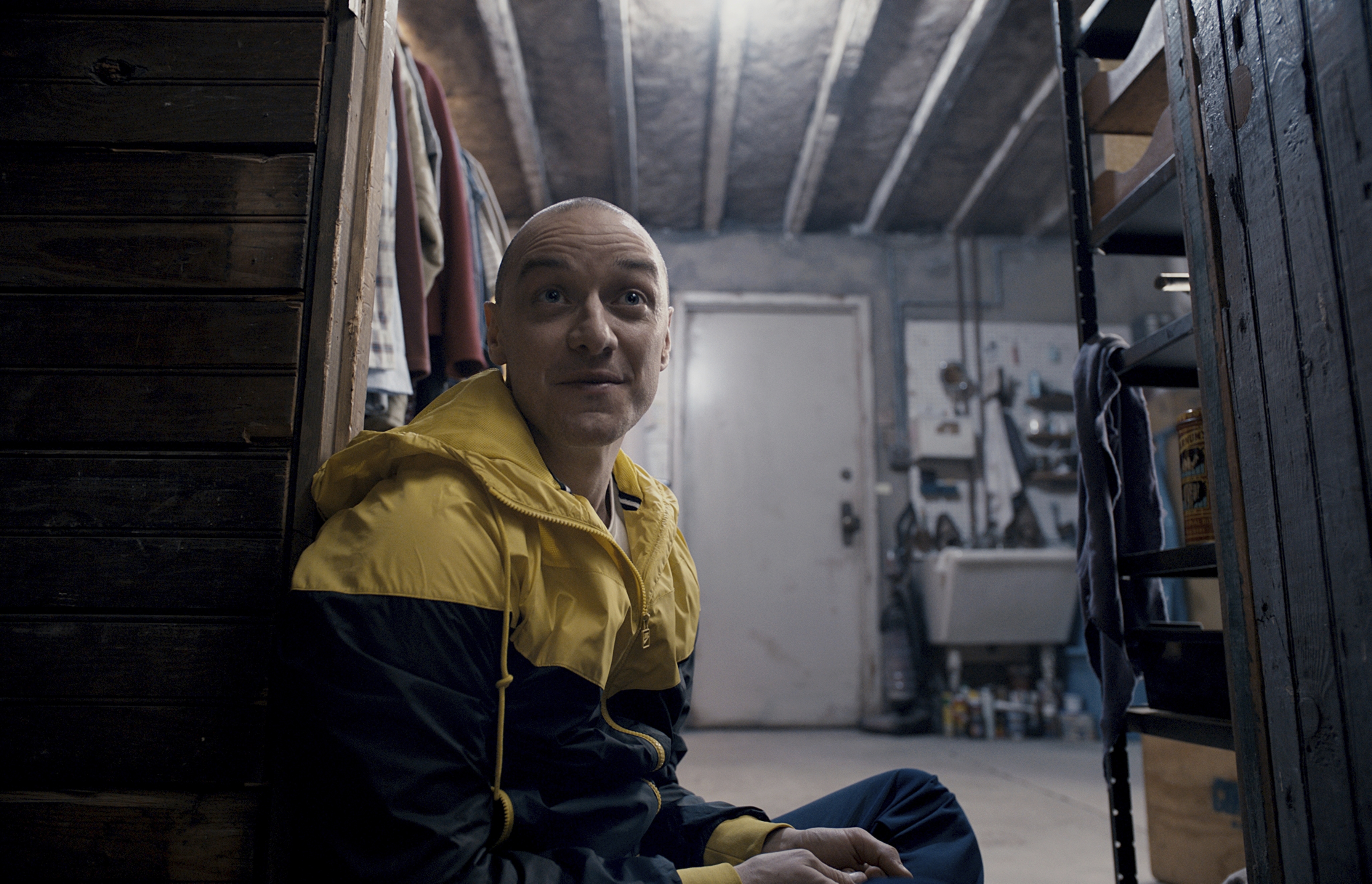
Kevin (James McAvoy), the antagonist in Shyamalan’s “Split,” who suffers from dissociative identity disorder. Mental health advocacy groups have criticized the film’s portrayal of mental illness in a character defined as the villain in the horror film.

Kevin (James McAvoy), the antagonist in Shyamalan’s “Split,” who suffers from dissociative identity disorder. Mental health advocacy groups have criticized the film’s portrayal of mental illness in a character defined as the villain in the horror film.
Hallie Lauer | Layout Editor
M. Night Shyamalan’s new movie “Split” hit theaters Jan. 20, and while Rotten Tomatoes gave it a 75 percent rating, many movie goers were displeased with the movie’s portrayal of individuals who suffer from mental illnesses.
Many online health awareness communities, including U.S. mental illness support group The Mighty, were displeased with the portrayal of the antagonist in the movie.
The film’s antagonist, Kevin — played by James McAvoy — is a man living with dissociative identity disorder (DID), previously known as multiple personality disorder. He has 23 different personalities, one of them being referred to as “The Beast.”
The plot also revolves around him kidnapping three young girls, creating a villain out of the one character in the movie with a mental illness.
The Mighty wrote a letter Dec. 29 to Shyamalan saying that “‘Split’ represents yet another gross parody of [those with mental illness] based on fear, ignorance and sensationalism, only much worse.”
After seeing the movie, Stephanie Ebbert, a freshman elementary education major, said the movie was “twisted” and “awesome.”
“However, it did enhance the bad stereotypes of mental illness because it implies that everyone suffering from the multiple personality disorder is insane and terrible,” Ebbert said.
According to the National Alliance on Mental Illness (NAMI), about two percent of the U.S. population suffers from DID, making it one of the lesser known mental disorders.
“I can understand people reacting this way,” Samantha Pringle, assistant to the director of the Wellness Center and licensed social worker, said. “Mental health is still a stigma, so when a movie has similar elements it can be upsetting.”
Many other independent bloggers took up the same cause, agreeing that this portrayal was offensive to people with DID, yet other movie goers, including some Duquesne students disagreed.
“I thought [the movie] taught me about how complex their minds can be, and how hard it can be living with a disorder like that,” Reilly Zimmerman, a freshman journalism major, said.
For students like Zimmerman and freshman international relations major Gordon Turley, the movie was an eye-opener.
“On the surface it demonized mental illness, but if you look past that you realize that this guy is grappling with an illness [that] no one thinks he has,” Turley said. “I thought it was more in time to start discussions and conversations about the unknowns of mental illness.”
According to NAMI, one in five adults are living with mental illness, and in the past year 60 percent of those adults did not receive mental health services.
Because of this, mental illnesses are often highly misunderstood.
“The movie is portraying it in a horrific way that is scary and traumatizing,” Pringle said. “I would be very empathetic to the people affected by this movie.”
She said, however, that it should not be taken too seriously.
“Mental health is such a stigma that, when it’s portrayed this way, people are affected by that, but it is a movie,” Pringle said. “It is fiction meant to entertain.”




—many movie goers were displeased with the movie’s portrayal of individuals who suffer from mental illnesses.???
It fictionally portrayed one person. It fictionally portrayed one illness. It fictionally portrayed a very narrow perspective of even that one illness.
You are extrapolating far too much from that.
khmaio@earthlink.net